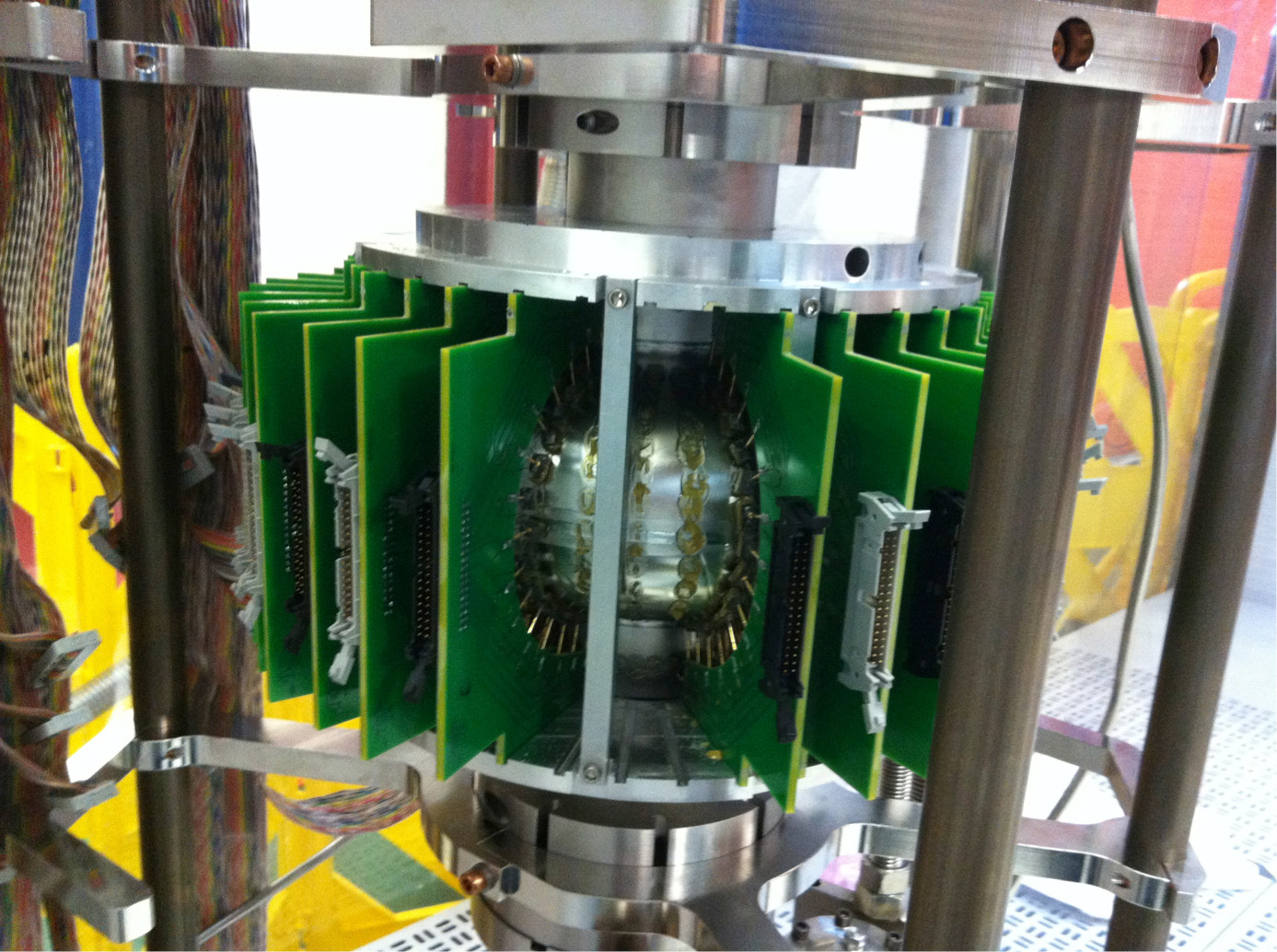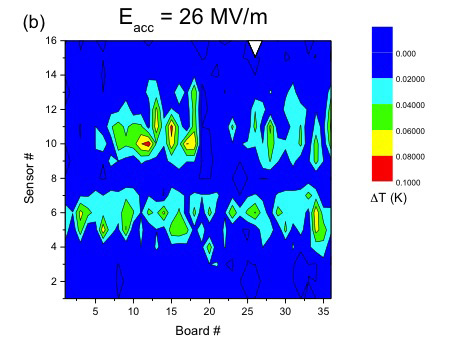Fermilab's new cavity temperature mapping system commissioned
 |
Temperature-mapping sensors are placed around a single-cell niobium cavity to find spots where energy is dissipated. Photo: Alexander Romanenko
|
Fermilab scientists have a new diagnostic tool that could lead to far more efficient accelerator cavities.
A team in the laboratory's Technical Division, led by scientist Alexander Romanenko, recently completed and commissioned a custom-made temperature-mapping system to be used on superconducting cavities. With the new tool, one of only three such in the world, scientists may be able to get to the bottom of the problem of why superconducting cavities dissipate much more energy than theory predicts.
It's a problem that researchers have addressed largely using trial-and-error methods. But by measuring the varying temperature over the surface of the cavity, the new system can pinpoint hot spots in the cavity wall, culprit sites that cause anomalous energy dissipation. Understanding how and why the dissipation happens provides an invaluable insight into the governing physics, which is still not understood.
"Before, we couldn't do the same level, or even a comparable level, of fundamental research on cavities as places such as Cornell or Jefferson Lab because, without a system like this, the cavity's basically a black box," Romanenko said.
"You'd see from the data that there was energy loss, but you wouldn't know where," said TD scientist Anna Grassellino. "Now we can detect the heating patterns in the cavity walls and use them to identify the different loss mechanisms."
The system comprises 576 sensors placed closely together all around a 1.3-gigahertz cavity cell. Each sensor takes the temperature reading for a square centimeter of cavity wall. An exceptionally high reading points to the site of energy dissipation. Scientists can then remove the lossy piece of cavity wall and try to learn how that particular area is different from the rest.
The project is part of an effort to raise superconducting cavities' so-called quality factor, or Q. The higher the Q, the less energy the cavity loses, the less power it needs to propel particles.
Tests show that the quality factor increases or decreases depending on the cavity's electromagnetic field strengths, though in principle it shouldn't. Researchers don't fully understand the reason for the sloping Q, or more importantly, how they can prevent Q from sloping downward, leading to energy loss.
Read more
—Leah Hesla
 |
Red spots in the temperature readout of a single-cell niobium cavity indicate places on the cavity where energy was dissipated. Temperature mapping was developed in the 1970s at Cornell University, where Romanenko completed his dissertation on a related topic in 2008. Last year he and his team learned how to build their own system from researchers at Jefferson Lab. They spent one year custom-building each sensor, finally commissioning the system last April.
|
|